Hagerty ran this story just over two years ago, and we received quite a bit of excellent feedback on it. A lot of you agreed with our choices, some of you suggested your own, and others simply refused to acknowledge the faults of British cars. We’re featuring it once more to see if the prevailing winds have shifted. Did we get any wrong? What would you add to the list? – ED

I love British cars, I really do, and that’s despite over the years sometimes joining in (said ruefully, now) with the good-natured teasing of such motoring Aunt Sallies as the Austin Allegro and Reliant Robin. To all British car fans I’ve wound up, I humbly atone.
However, British cars have occasionally suffered from curious national characteristics, which sealed in actual flaws that have since become their undoing.
The first part of this you can lay fair and square at the Treasury’s door. In 1910 it asked the RAC for a way to tax cars on a sliding scale, and they came up with a system based on cylinder dimensions – total cylinder surface area. To build cars that were cheap for owners to tax, British manufacturers therefore opted for a narrow bore and a long stroke in small-capacity engines. This stopped the Ford Model T from dominating the industry, but sometimes made Britain’s own popular models gutless and prone to premature wear.
Besides the fiscal structure, British carmakers were frequently underfinanced, leading to cut-price thinking, and because there was a huge captive market called The British Empire they could also be lazy about rigorous development; British cars from the 1930s to the 1950s were honed for pottering around British suburbs so prototypes didn’t need to visit the Arctic Circle or Death Valley, it was calculated.
The 13 cars below, therefore, suffer from some of these legacies, and sometimes also a failure to fit into a suddenly changed future. None are terrible, but all their flaws were probably avoidable.
Singer Nine Le Mans Replica, 1935
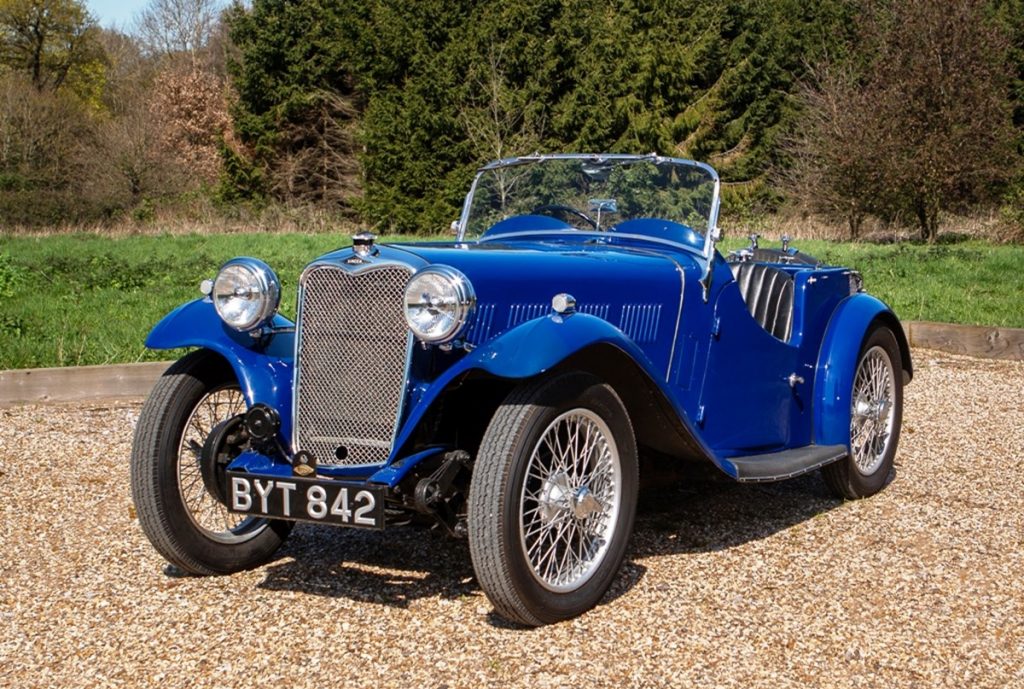
Singers were some of the most popular small cars of the early 1930s and the Coventry company was keen to buff up its image by taking on MG and Riley in motorsport. That’s why it took four specially-built sports versions of its best-selling 9hp model to Ards in Northern Ireland in 1935, to have a crack at the Tourist Trophy race. It just could not have gone any worse: three of them crashed at the exact same spot at the tight Bradshaw’s Brae corner because of a design fault in the cars’ steering linkage – a fault that had not shown up on the sweeping corners at Le Mans. The drivers, thankfully, stepped uninjured from the mass wreckage, but the reputational effect on sales was catastrophic as punters worried it might happen to them too.
Morris Minor MM, 1948
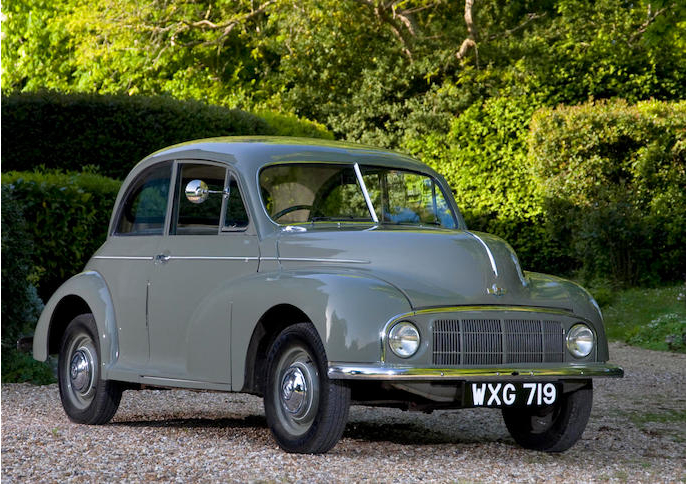
The first true masterpiece from the agile mind of Alec Issigonis should have come with an all-new flat-four ‘boxer’ engine with eager performance to match its excellent roadholding, ride comfort and balance. However, just as it was shaping up to be a global pacemaker, the accountants intervened and the engine was axed. In its place went a 918cc sidevalve motor wheezing its way from the 1930s, and the Minor was rendered so underpowered it could barely manage the steep hills of San Francisco. And that was a huge shame, because the Volkswagen Beetle had no such issues and by 1955 had crushed the Minor’s US export prospects, selling 31,000 where the hobbled British competitor shifted just 700.
Land Rover Series I Station Wagon, 1949
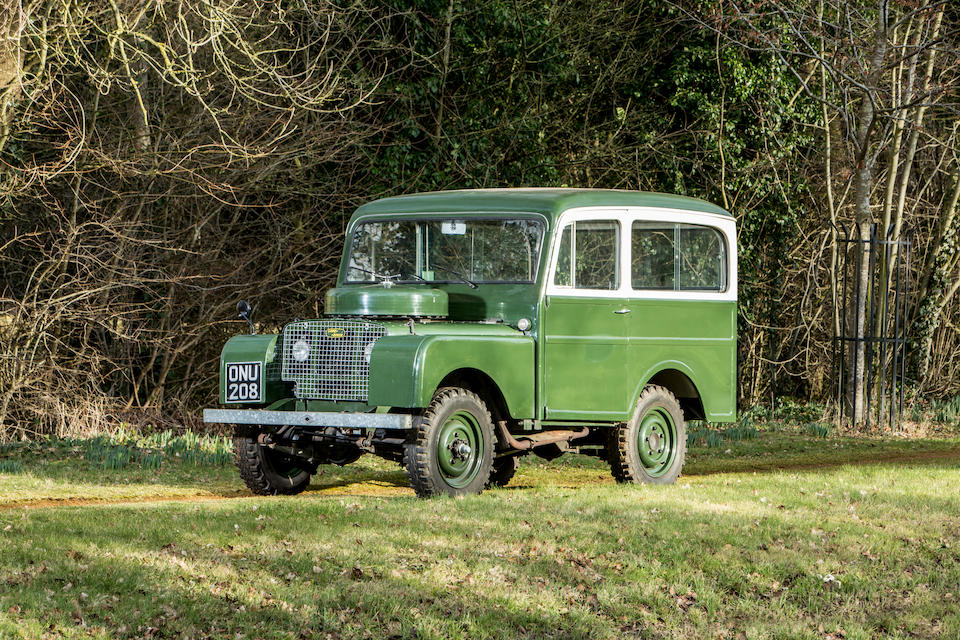
The Range Rover is the first upmarket SUV, right? Wrong. Land Rover was in the very same territory in 1948 with this one. It really was a marriage of rut-rider and luxury, since the passenger compartment was fully coachbuilt by Tickford in Newport Pagnell – its craftsmen soon after became part of Aston Martin – and complete with leather upholstery and even a tinplate cover over the spare wheel to make it look less truck-like. The problem, though, was the price. Unlike the standard Land Rover, which was a commercial vehicle, this one came with punishing levels of Car Tax that just made it too expensive for most people. Only 50 were sold in the UK. When Land Rover had another go at station wagons in 1954 it got the rivet guns out and made them from sheet aluminium; super-basic but much more affordable.
Daimler DK400, 1954
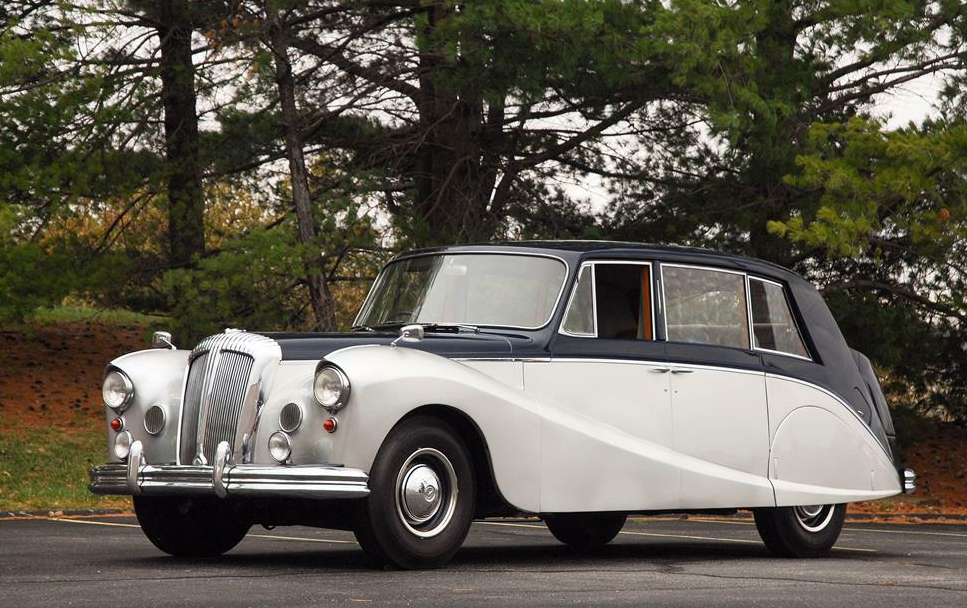
This is the shameful car that lost Daimler its place in Royal circles. The marque was the Windsors’ favourite going right back to the dawn of motoring but in 1953 the company decided to axe its imposing straight-eight models and replace them with the DK400. This was merely an elongated version of the Daimler Regency, with its rear track extended so comfortable three-abreast seating was possible. Matters came to a head when Daimler delivered two DK400s to the Royal Mews after many months of delays, most of them caused by the DK400’s feeble performance as it struggled to haul around a couple of tons of mobile throne room. Even then, they were severely underwhelming cars, and the Royal warrant was not renewed. With Princess Elizabeth an owner since 1950 and the Duke of Edinburgh also a fan of the marque, Rolls-Royce would instead supply the official state car in the decades that followed.
Vauxhall Victor F-type, 1957
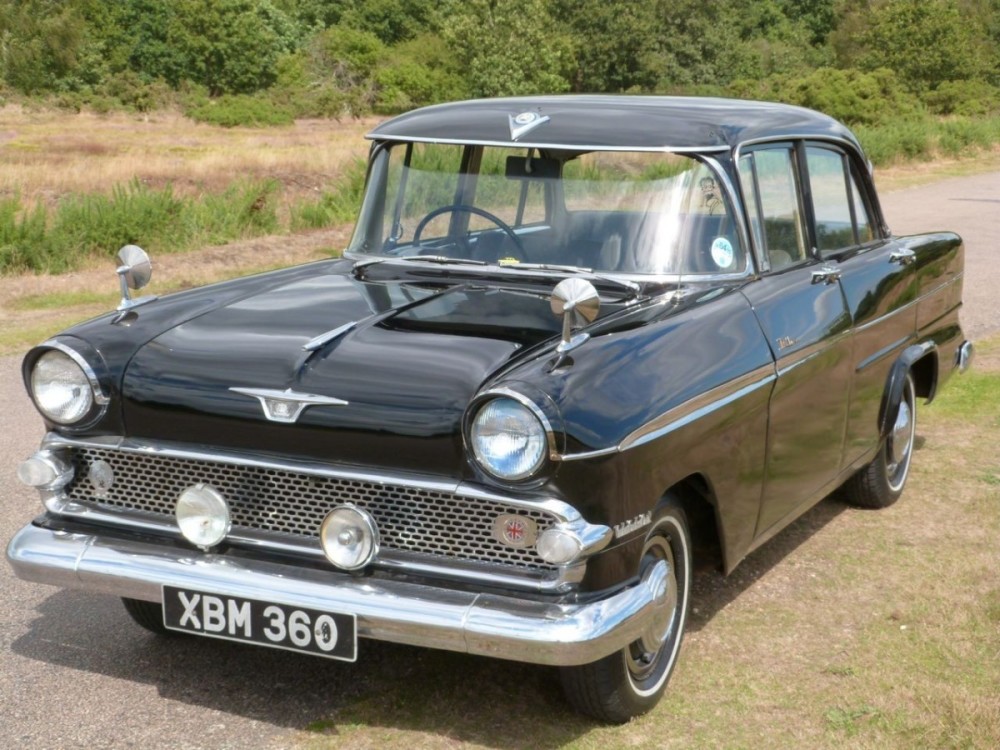
Vauxhall’s mighty General Motors overlords in Detroit decided to shake up its sleepy British outpost in the 1950s. Its aim was to create a new compact saloon that it might also be able to sell across the USA and Canada, as demand for compact models was soaring. To do this, they insisted on the trendy design theme of the 1955 Chevrolet Bel Air as a starting point. This decision came with a tight schedule to get the car into production in 1957. Production engineers in Luton were overwhelmed with the task; the rush almost killed them. So while there was nothing greatly amiss with the 1.5-litre four-cylinder engine, the flashy body had issues aplenty, which resulted in it becoming one of the most notoriously rust-prone British cars ever. Water trickled in through the seals around the fancy, wraparound front and rear screens, and flimsiness in the monocoque structure meant doors and bonnets were ill-fitting, letting in even more rain, spray and mud. There were also nasty vibrations at around 50mph. Its brief status as “Britain’s most exported car” came to an abrupt end when Pontiac and Oldsmobile dealers refused to take any more. The few that survive today, mind, do look pretty cool.
Jaguar 3.4-litre ‘Mk 1’, 1957
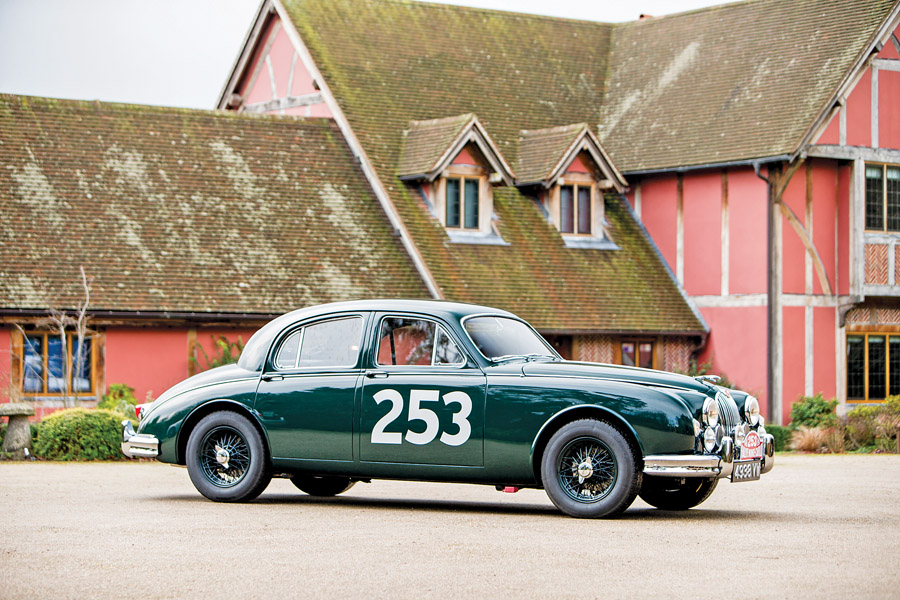
It’s not always appreciated that Jaguar pioneered the compact sports saloon in 1955 with its sleek and modern 2.4-litre. It was also the company’s first unit-construction model, and the engineers left nothing to chance in making sure the chassis-less structure wouldn’t twist or buckle. Trouble was, it was so robust that the car’s performance was somewhat sluggish. The solution was to drop in a 3.4-litre engine not a million miles away from that in the Le Mans-winning D-type. This utterly transformed the car and not always for the best: acceleration and top speed were now utterly thrilling but the drum brakes and suspension set-up of the time simply could not cope. This could be a lethal car on wet roads even in experienced hands; F1 world champion Mike Hawthorn died after crashing his. Disc brakes, and then an overhaul to Mk 2 status solved things.
MGC, 1967
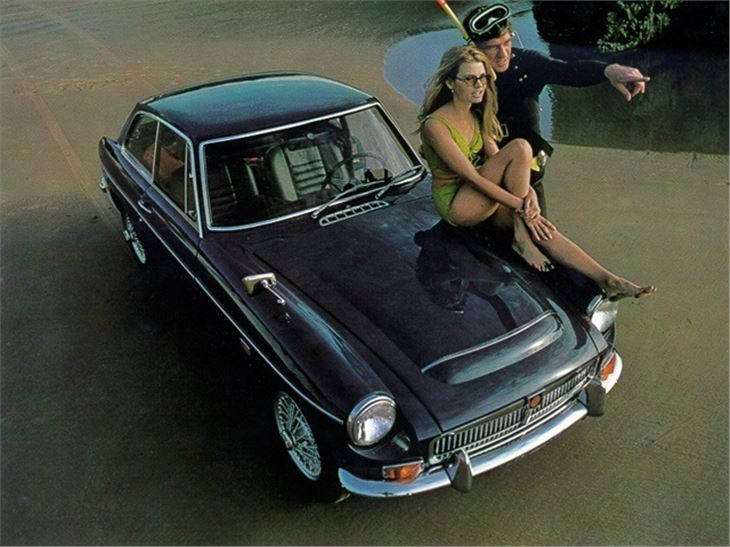
A misguided attempt to both replace the Austin-Healey 3000 and act as an MGB-based range-topper for the MG line-up, the MGC was hamstrung from the start for want of a decent motor. BMC installed the 2.9-litre straight-six from the Austin 3-litre, which couldn’t even be shoehorned in – they had to redesign the engine bay, create a new torsion-bar suspension system, and bulge the bonnet in two places to make space. After all that, the engine upset the sweet handling of the MGB, resulting in untidy understeer in corners. It was set up as a relaxed cruiser with bigger wheels, so wasn’t all bad – Prince Charles liked his – but it didn’t exactly worry Alfa Romeo. The all-iron engine weighed 209lb (95kg) more than the standard B’s four-cylinder power unit… yet when they later installed a Rover V8 engine in the car, not only did it fit like a dream but it weighed 40lb (18kg) less than the B’s B-series four.
Morris Marina, 1971
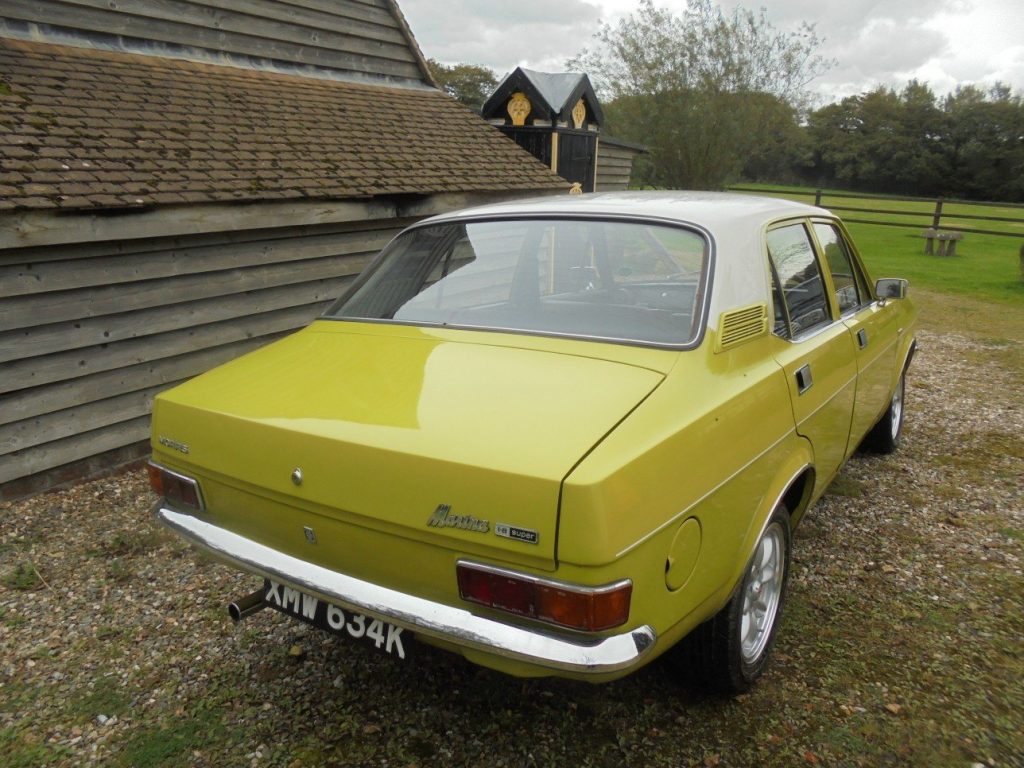
In truth, the often-maligned Marina was broadly okay, but it was designed both in a hurry and on a slender budget. Here was a mishmash of all that British Leyland could throw together in great haste to provide something a bit like the market-leading Ford Escort and Cortina. Biggest corner-cut of all was the torsion bar front suspension from the Morris Minor – the car it was meant to replace – which made it understeer and bounce around on rough roads. This was soon fixed with some tweaks and the Marina’s biggest flaw then became simply its overall mediocrity. The public, though, didn’t seem overly bothered and BL sold over a million of them, providing reasonable service for most owners. Intended as a stopgap with a five-year life, the platform finally bowed out, as the Morris Ital, in 1984.
Jensen-Healey, 1972
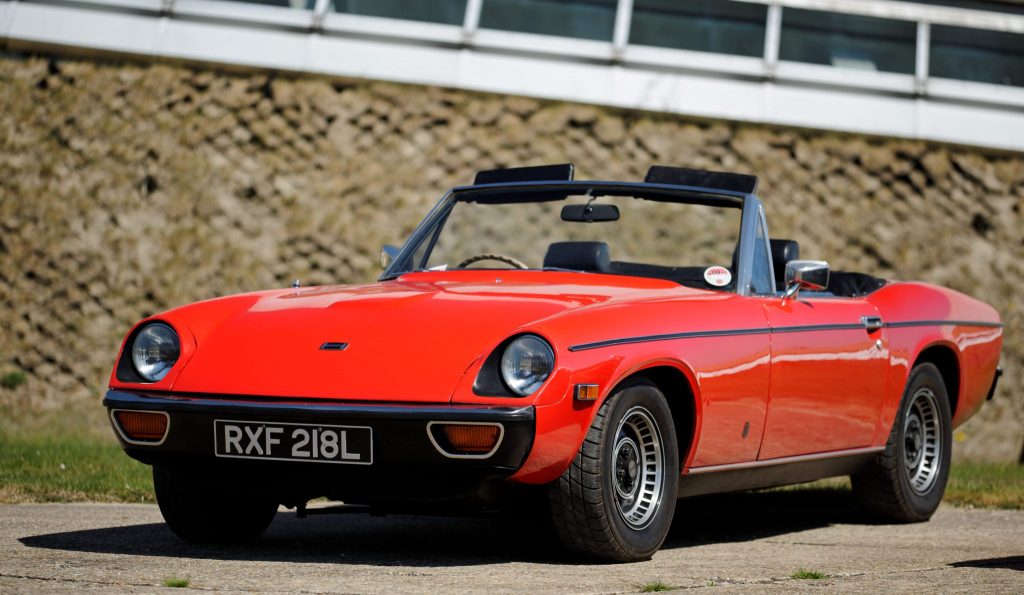
After BMC had failed to replace the much-loved ‘Big’ Austin-Healey now it was the legendary Donald Healey’s turn to have a crack, and with this car – built by Jensen and bankrolled by San Francisco car importer Kjell Qvale – they made an excellent attempt. Opinions differ on how well it drove, as Healey aimed for a tradeoff between handling and ride comfort, but the roadster’s Achilles’ wheel could be found under its bonnet. For reasons of both glamour and performance, Healey agreed to Lotus’s offer of its twin-cam, four-cylinder engine. He should really have gone for something less exotic because it was too temperamental for a mass-made car, suffering oil leaks and sometimes refusing to start. Once dealers had sorted out that lot they then had to tackle the next complaint from irate owners – rapidly-spreading rust. It was all too much for a small car company to cope with, and Jensen went bust in 1976; the Healey partly to blame.
Jaguar XJC, 1974
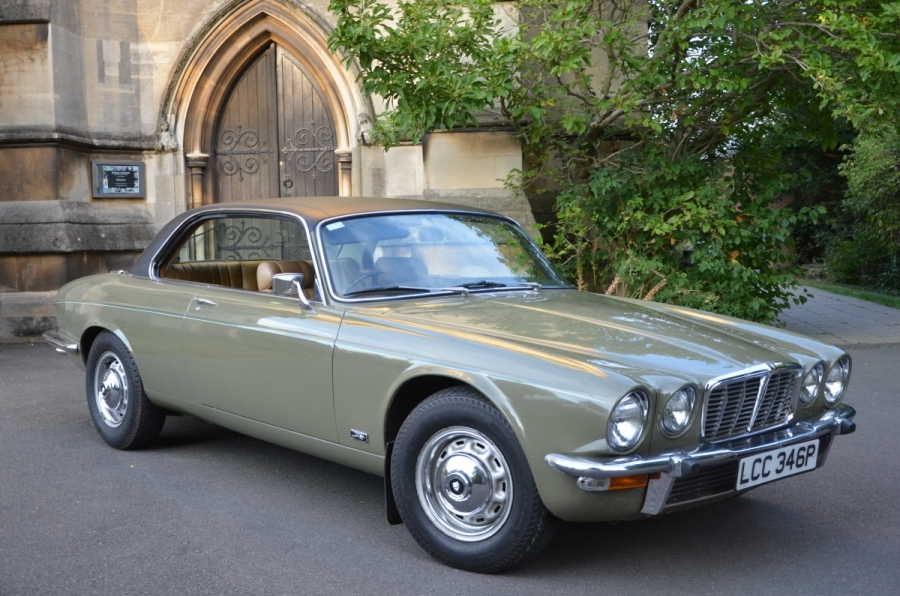
The faster you drove the beautiful, two-door version of the XJ6 or XJ12, the louder the annoying whistling sound would become, just above the right-hand lens of your Reactolite Rapide sunglasses. Jaguar struggled to achieve air-tight sealing between the frameless side glass and the pillarless apertures which made the car so gorgeous when all the windows were lowered. The XJC is often stated as a personal favourite of company founder Sir William Lyons, yet making this version, painstakingly cut-and-shut from standard production saloons, was a tricky business; a vinyl roof was required to cover up the stitches from surgery. After just three years the car was dropped as simply more trouble than it was worth.
Jaguar XJ-S, 1975
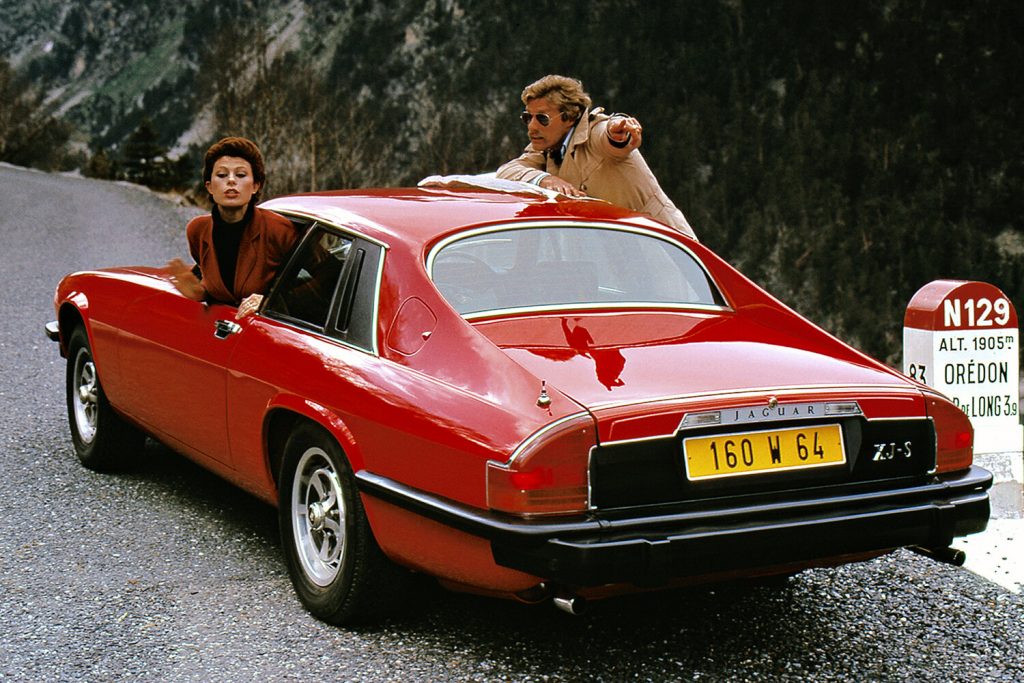
A rather brilliant car, this. It might have been detested by E-type fanatics but this impressive GT was intended to ambush the Lamborghini Espada and Ferrari 365 GT/4, not replace the famous two-seater. Its flaw was external: the economy. This 18mpg V12 aerodynamic slingshot went on sale just as the worst fuel crisis in living memory bit hard, with inflation soaring just like the XJS’s rev-counter needle. On top of that, Jaguar’s owner British Leyland had just been outed as insolvent and subject to an emergency nationalisation. There were more pressing things to fret over than the fate of this plaything of the rich.
Reliant Scimitar GTE, 1976
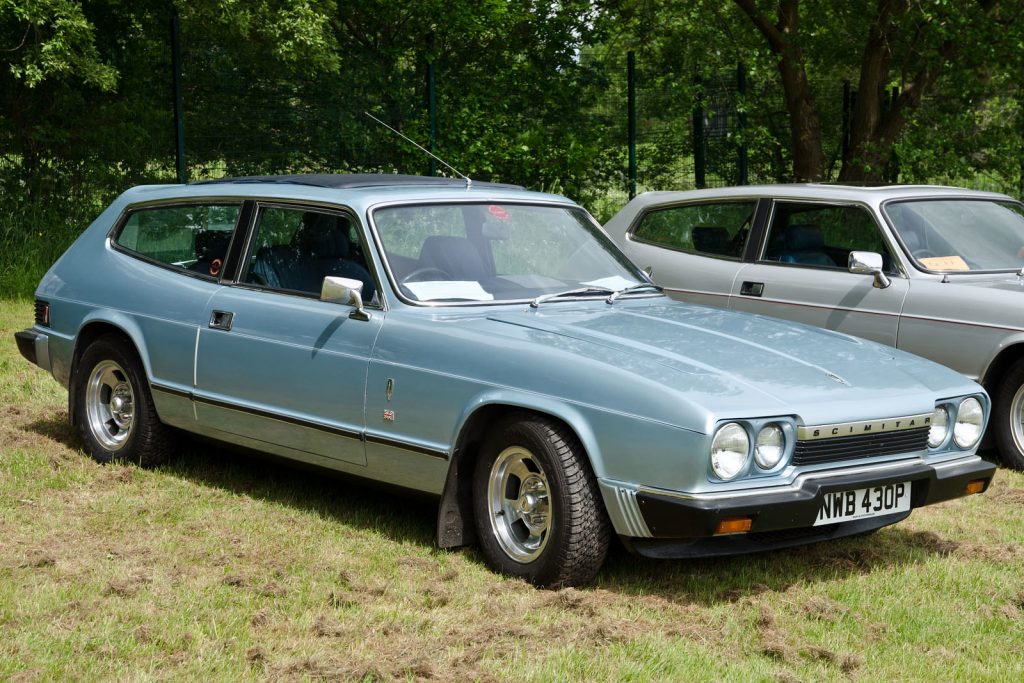
Reliant reckoned they’d thought of everything with the second-generation GTE. Longer, wider, roomier, lots more crushed velour inside, but still with those winning looks, excellent versatility and ample, dependable urge from the 3-litre Ford V6 fresh from the top-dog Capris and Granada. In a small car factory, though, things can get overlooked, and in this case someone didn’t pay enough attention to the way the fuel line fed into the V6’s carburettors. It would sometimes detach itself, spraying petrol over the hot exhaust manifold. An engine bay fire was then possible, and this plastic-bodied car could turn into a real tinderbox.
Rover CityRover, 2003
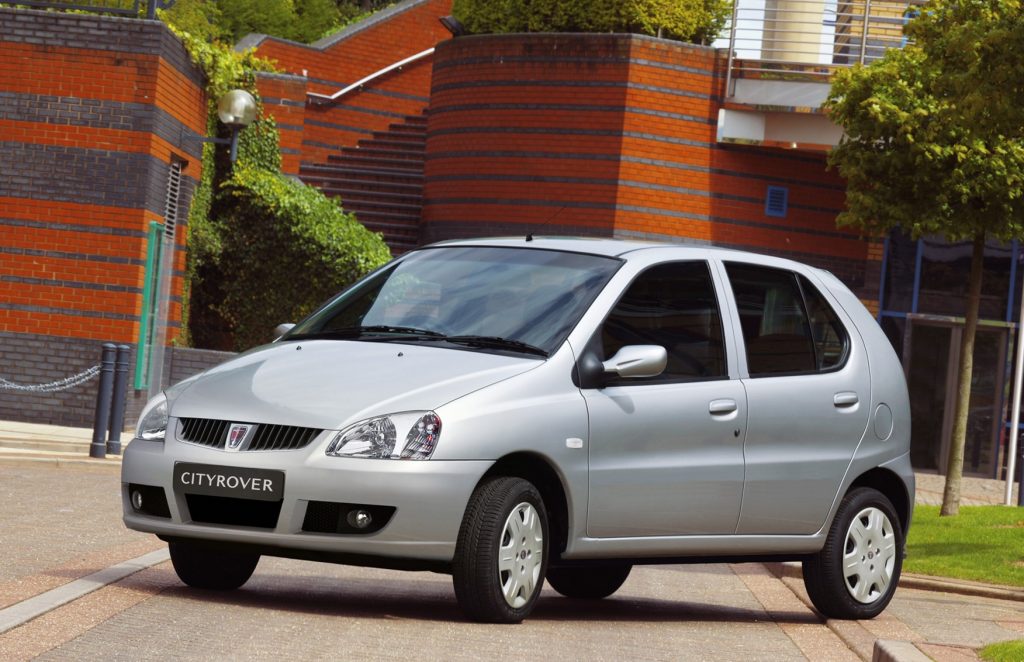
Desperate times called for desperate measures, and when BMW offloaded what was left of Rover to its management in 2003, the business came without any development facilities, just the Longbridge factory and sundry old cars to make in it. The Indian-built Tata Indica represented a chance to get a new Metro-sized car into Rover showrooms at almost no cost, and that’s what happened. Just a few alterations to the badges, suspension settings and gearchange were deemed necessary. As basic transport the so-called CityRover was just about bearable, but Rover decided to sell the seven-grand supermini at a hefty premium above the fantastic new Fiat Panda. The company didn’t have the money to either advertise or improve the car, and less than two years later the CityRover went down with the rest of MG Rover.
Read more
Cruel Britannia: 9 British-built cars we loved to hate
Nine £5000 summer roadsters you can buy today
Ride on time: 13 collectable motorcycles to buy now

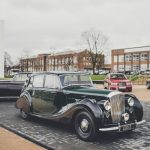

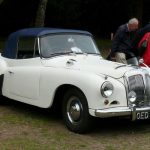






Really tired of all the Brit bashing – foreign cars were no better and often worse but seem to now be seen through rose tinted spectacles!
Hello Nick, no “Brit bashing” here – just a realistic and objective look at British cars that might have been seen as world-beaters had they not had unfortunate flaws.
If you’d prefer an article with a more positive spin on British classics though, might I suggest one looking at the surprising increase in values of cars like the Allegro, Imp and Cortina?
You can read all our articles on British cars – many of which you’ll quickly realise are rather positive – by clicking here.
I used to live in Canada in the 1950’s, and was shocked to see the appalling condition of British cars which arrived at the dockside covered in rust ! little or no attempt to protect them from the on deck sea crossing, but nothing has been learned has it, rust is still a big problem on modern Jaguars, why not wax oil/underseal them at the factory ?
Massive shame Jensen didn’t survive to see their Healey GT go into production with the rally engine from Coburn Improvements. This firm, behind Dealer Team Vauxhall’s rally activity, had developed, in conjunction with Broadspeed, a superb twin cam rally winning engine that transformed the GT. only a couple of prototypes were ever built, before Jensen failed.
I find the newsletters all very interesing and see articles about BMC, VW, etc etc etc, but never see anything about that mainstay of British middle class and top end models made by the Rootes group.? in my opinion some of the most solid and reliable cars made.
Thank you, great suggestion – we’re always happy to cover subjects when there’s an appetite for it. Certain manufacturers have somewhat dominated the industry over time so they tend to get greater coverage, but we’ll look into covering more from the Rootes Group in future.
The Reliant GTE was dreadful, after rain there was a pool behind the front seats, and mine did actually catch fire with petrol around the carbs after it wouldn’t start. The Ford engine stripped its cam drive chain gears, and if you slammed the door too hard a window would shatter. Pretty car but a nightmare. On the other hand, my MGC was a beautiful car with impeccable handling (after a minor tweek around the front suspension) and stormed around bends far faster than my TR6 did, but I had bought mine not long before the fuel crisis, and for my long commute to work I quickly swapped it for a mini. Wish I’d kept it though.
At the time the of his crash rumour was that his Jag had experimental Dunlop disc brakes, not drums. Was this a cover up, I wonder?
OK so there were/are some problems with water ingress. I would suggest that any car with the Essex V engine and the carb sitting on top of the ‘V’ would suffer the same way had fuel sat on top of the inlet manifold. I’ve never heard of a window shattering from slamming the doors. Finally, please bear in mind that the cam drive gear and the carb (mentioned in the article) were not produced by Reliant. The timing gear failure also happened(s) on Capri 3,000 and others that used the Essex engine. The Webber carb problem was to do with the coefficient of expansion between the brass inlet pipe which was simply pressed into the aluminium body of the carb. It has been suggested that the fibreglass body was not as effective as a heat sink as a steel bonnet which may have exacerbated the problem, but it was a Webber problem really, not s Scimitar problem. Did Essex Capris etc have the same problem? Honestly, I don’t know.
My Dad had one of the last F type Victors from around 1960 – by then it had been heavily modified and had stuff like a factory rubberized underseal (which turned out didn’t do it any favours at all). It really was part of the family and we went everywhere in it, the engine was so sweet, the interior was lovely and smelled of leather and don’t recall any major mechanical issues with it at all.On a straight road I would say “faster Dad, faster” and I recall seeing 80+ mph on the speedo. My Dad for a couple of years was going through a bad time and had several crashes in it and apart from some new doors they always managed to straighten it out and match perfectly the two tone paint. Although it still shined up well, on its 10th birthday it failed its annual inspection on structual issues and my Dad parked it on the drive and got another car. It was 2 years on the drive before finally being taken away..but in those two years I had never before or since see something disintigrate so quickly, there were large holes appearing everywhere — it was like it thought the family didn’t love it anymore and it just died.
The reason that the V8 fitted so well in the MGB, was that it was designed from the start to have a V4 engine. Lack of money (surprise surprise…) led to using the B-series engine, an engine that was hopelessly out of date even back in the 60’s.
Never had that problem with my my mk. 1 GLX 3.0 Capri. Was a great car. And with a mild tune could out perform and out handle my brothers 2.8i Capri 👌
Chris Coburn. Would be interested to hear more about the twin cam engine you mention. I worked in the experimental dept for Jensens when various engines were considered including BMW, Ford and even Maserati ( though I’m not sure the latter was ever actually installed as I think it was deemed too expensive). I cannot recall any development work being done on a rally bred engine, though I suppose it could have been done as an outside contract. Was it based on the Vauxhall unit?
The photo you used to represent the Singer Le Mans ‘Replica’ is in fact a standard 1935 road car. The four factory race cars looked very different and crucially, used a different steering set up that was later used successfully on 1936 and later road cars. The team cars faced disqualification at Ards in 1935 because the steering was not of the type fitted to then current road cars and they were rapidly converted to the earlier type…. with dire consequences. Had they been allowed to run with the steering they were designed with (as they did at Le Mans) the outcome would likely have been very different.
Really enjoyed this article, first time I’ve read anything from Hagerty, definitely signing up
Nice article.
Great comment from Frank Barrow about Jags needing underseal and their rust problems; shame they’ve been made from aluminium for a decade, which doesn’t rust.
I had a TR4 and drove all over the US including the Rocky Mountains with no issues. Just saying.
Looks like the wheeler dealers jag xjc
Regarding the Singer Le Mans, it is not correct to say ‘three of them crashed at the exact same spot at the tight Bradshaw’s Brae corner because of a design fault in the cars’ steering linkage’ There was no design fault at all. The problem lay with Singer hurriedly converting the steering arrangements to those for the current year. This was because the cars had been fitted with the steering set up for the next year (1936), and this would not have been accepted by the scrutineer.
Re Mark’s comments on the ‘hopelessly out of date engine in the MG B’ one should point out that this B series engine, lump that it is, has successfully powered a number of bespoke sports cars and in itself has had a fantastic racing history for the next 60 years, as has its little brother the A-series. These dream ought engines have along with the 1500cc ohv cortina engine have been on of the most races in motorsport history.
An interesting article.
Scimitars are not a tinderbox though .
Yes a few caught fire from the Weber carburettor fuel line brass spigot detaching itself from the aluminium of the carburettor body.
If a fire does break out ,grp is more thermally insulating and contains the fire for a greater period of time.
If the fire brigade takes over 1/2 hr to arrive yes the fire make break through and then ignite all the resin of the front of the car .
But a steel bodied car will have the effect of a brazier and fire spread will be much faster .
The carpets will ignite much faster against the now 300-400 degree Celsius steel and spread is therefore much faster .
Just as many Granada’s and 3.0 litre Capri’s caught fire due to this defect .
Even 2.0 litre Cortina’s and Capri’s ,or any other car with a twin choke Weber .
The later 2.8 Scimitar’s also suffered from problems with the Pierburg carburettors spitting back and igniting the fuel vapour in the air cleaner .
But equally did any other vehicle utilising the 2.8 Cologne normally aspirated ,Ie 2.8 Capri ,Granada and TVR 280 .
Nice articles that I read on a regular basis. I worked for a BL dealer in the 70’s. The quality of new cars out of the factory was appalling. We had a real job also selling Allegros, Marinas etc against the competition, usually the Cortina/Escort. I agree values are rising, I can’t think why. Nostalgia? Harking back to lost youth?😄 These cars, like many of their ilk perhaps are better as occasional use pampered classics! However, not for me.
Nothing said about the Leyland P76 brute of a thing,would go down well with this group of 9
My father spent nearly 30 years in auto spare parts here in Australia – he always said “thank God for the British auto industry, they made me very comfortable!”
I owned an MGC and replaced it with a 1973 Triump Stag that I still own. Surprised that the latter was not on your list!
Why was the Triumph Stag not listed?
Andrew Ryan – Well I am sure your Dad’s work descendants, are doing just as well out of their Honda,Toyota etc franchises otherwise they would not be in business. However, it looks like a huge industry is going to disappear overnight when the electric car takes over – no more fanbelts, sparkplugs,radiators, head gaskets, oil filters, fuel pumps,clutches, auto trans etc etc.
Yet there is almost a 50% survival rate for MGCs and it has become quite sought after
The 918cc side-valve engine in the MM Minor might have been gutless but it was at least reliable. Early Minors had the lowest number of warranty claims and that helped build its reputation as a good car to buy.
The Capri’s did and still do have issues with the brass pipe parting company with the Weber carburetter. From the early Mk1s to the very last of the Mk3s ,I put mine back in on my mk1 with loctite and it ran 10 or more years others are putting a thread in the carb and screwing in a new union .
The early Vauxhall Victor’s apparently stretched the metal on the wings to much making the steel in some places paper thin resulting in quick rusting as there was little to rust.
After being tortured by a’71 Mini and a ‘75 Marina, when I arrived in the US in 1986 I bought a 600 dollar ‘69 Dodge Dart with a 273.. reliable, bullet proof and after I had worked on it, fast. I felt that the British had been treated with total contempt by their car industry and their governments.. all those sad buckets churned out in the 60s and 70s…
I thought the Le Mans Singers that crashed were 1.5s, not 9s ?
Have British manufacturers been caught out faking emissions? No? I thought not. British integrity caused the demise of many of these cars, it’s expensive to comply with the European union regulations….so most EU manufacturers cheated instead.
Hello John, thanks for commenting, though you’re somewhat off-target.
Only four of these vehicles (those built after 1973) were made while the UK was actually a member of the EU (or the EC at the time), and as the story notes, the failings of those that were built after 1973 were very much down to factors unrelated to EU regulations, emissions or otherwise.
Ask any breakdown responder from the AA/Green Flag etc. as to which cars they are called out to the most, by far, it’s not even a close contest, and they will say Range Rover and Jaguar. Just saying….
It’s not just the British car industry. Everything is a mess. Just look at public transport. The buses are not maintained and fail all the time.
Or can you name a british lorry? Most of the HGVs parking around here are MAN, DAF, Scania, Mercedes.
Britain got Talent? Obviously not here. What’s important in school? Wearing the right uniform.
One thing you did not mention regarding Mike Hawthorns crash was that he had modified the car inasmuch as widening the rear track and several other areas in no way was it a standard car.
That old chestnut about Scimitar GTE fuel pipes. Well known about in the 1970s when I had mine pinned. I still have the car & no issues whatever… Rob
I had a Morris Marina. Faults included: steering that would stiffen after 50 miles. Brakes that would judder and require roughing and resetting of the shoes, a disconcerting ‘floating’ feeling at motorway speeds and a distributor drive whose gears had not been case-hardened and wore out at 20,000 miles. I managed to cure or sort these problems out, then the car got stolen. It was, however, a roomy car with a good sized boot for family holidays.
Hawthorn’s crash has been attributed to using experimental Dunlop racing tyres in the wet. I know that corner and would not be rounding it at 120 in the wet in any vehicle. Legend has it, somebody swopped the tyres for standard versions before the wreck was removed from the scene.
The motor industry is an good example of the demise of engineering in the UK. It was far easier to blame the unions than criticise the board rooms, both France and Germany still have thriving motor industries even though both had similar workforce disputes.
The Stag itself did not deserve to be listed. It was the Triumph dealership’s mechanics that were not made aware of the care they needed regarding the all alloy engines and the issues if they overheated. Also the correct coolant was often not used. The same applied to the engine when it was cut in half and used in the Dolomite Sprint.
Hindsight is a wonderful think as I was a Triumph mechanic.
Just to digress a little with this. Triumph 2500 Pi, petrol injection used a mechanical distribution high pressure pump made by Lucas. It has come to light Lucas built them with the incorrect springs fitted on reconditioned units. So manufacturers can’t even get it right
Interesting read. An article on Italian cars would be about three times longer than this.
I used a Marina 1.8 for a few years and had no issues (BNO100T) Great car.
A lot of people decried the Allegro tho but no mensh of that?
I had a company car Marina back in the late 70’s when the Company I was employed by were taken over by the then mighty Champion Spark Plug Company, who supplied to BL as original. The car I was surrendering was a perfectly functioning newish Ford Cortina. In the process of transferring the contents of the boot to my brand new Marina, I noticed a dip in the boot floor covering, I lifted it, and it revealed a roundish hole through which one could view the ground below. Doubtless, the car had been sitting in a field for several months along with several hundred/thousand? other unsold others, but perfectly illustrates the complete lack of, well everything, with BL at that time.
My neighbour bought back a Vauxhall Victor F-type from Texas with him, it was totally rust free. It now stands in his front garden in North Devon less than a mile from the sea. Sat untouched and unloved for a couple of years, it won’t be long before it goes the way of all ferrous items here.
Our neighbour had one of those Vauxhall Victors. It was scrapped at 4 years old due to uneconomic structural failures from massive rust perforation. After my Dad (a Riley RM fan) looked at it he remarked that many of the unseen areas (eg inside the wings) had no paint, not even primer.
Really great reading material !
I believe the only connection with the Jensen Healey Lotus engine and the Vauxall engine was they both used the same crankshaft.
A largely accurate analysis but I tend to disagree with the Jensen Healey problems being placed with the engine. Very soon after their introduction the Jensen Healeys gained a reputation for rusting faster than… well, a Vauxhall Victor. The Jensen Interceptor range has a similar reputation though granted there is a lot of disimilar metal activity going on there. I have always wondered if this was something to do with the source of the steel.
Excellent article. A lot more needs to be said about the failure of home brand British motor industry, but these cars give a good insight into why the British industry failed.
What about the Rover 2000 – lovely car but who had the bright idea of putting a glass cover on the fuel pump in the front of the engine. First shunt on the front – glass bowl shattered sending fuel all over the bay. Many fires caused by this – total lack of joined up thinking.
Regarding your readers comment about Rooted group cars being under rated.
I test drove a number of British cars over the winter of 1976/7. The cars included Mini , Escort, Cortina , Rover, Allegro and the rest. None received much attention over that winter . When the test period ended all cars were washed for the first time in months. Most were affected badly by road salt induced corrosion apart from………..Hillman Avenger which looked like new!
Let’s bash the Brits eh. How about some comments regarding Datsun, Skoda, Lada, Citroen, Peugeot, Toyota etc. They were absolute tosh
I have worked on about half the cars in the list. And I can only assume someone fix the issue cos don’t remember them.
I must agree with most of the comments. My father had a 1960s Austin A60 Cambridge . Went well ,very economical but the then windscreen rubber seals couldn’t cope with the very curved windscreen. The soaking carpet rotted the floor panel and worse still the front out riggers. It would spread to the inner cills.
Land Rover threw away their outstanding lead in 4 x 4 s by resting on its laurels. Reluctance to fit a first class gearbox made by a specialist company to cope with increased engine power through the series models even to the Range Rovers. No servos offered even on their 12 x seaters ! At that time even the small and much lighter Japanese imports were fitted with them. Their early Diesel engines were an adapted petrol engine.
No wonder the 4×4 market became dominated by far more reliable Hilux, Shogun and Trouper. The petrol engines were very under powered. I could go on and on.
BL seemed to operate like a naval convoy travelling at the speed of the slowest ship in so much as the often poorer products of the various brands were chosen over the better ones. Killing off of the Daimler Majestic V8 engine in favour of the long in tooth Jaguar straight 6 and discarding of the smaller V8 engine used in the Daimler
Dart and mk 2 Daimler, to design a new V8 for the Stag. We all know the problems with that.
My father was given a Hillman Avenger as a company car when they first came out, he was traveling from bridgend to birmingham was on motorway at over 70mph and the bonnet collapsed in towards the engine
The problem with the Austin/Rover group was it was steered by the various Lords and Sirs of the day none of whom had any idea how to run a business and simply rested on their laurels under the illusion that Britain makes good quality cars.
The press made a great song and dance about the lefty unionists but that again was all down to bad man management.
The final nail in the coffin was the “new model” fiasco where vehicles were re jigged and re designed but with little or no additional capital as the company was deemed to be failing by the people in ivory towers when the only failure was inability to keep up with Japanese development.
Very interesting. Thank you.
A good follow up to this article would be to look into the demise of the British motorcycle industry, which was blighted by the same tyoe of blind managers withe a “bodge it on the cheap” and “it’ll do” attitude.
I had a Triumph Trident T160V which handled superbly, way better than the Japanese competition, a s was gorgeous to drive while it ran. But it spent half its life in bits trying to overcome the bodged “development” work, and the engine had to have a complete rebuild after only 20,000 miles. That is just one example. That is just a part of just one example if how the industry willingly disembowelled itself.
I had a Marina, 1.8tc. It made Howard’s girl look good and she lasted better! Dreadful car, comfortable as a settee, but otherwise dreadfull.
A good overview. What pendant realise is the Britsh motor I dustry started shooting itself in the foot as soon a WW2 was over.
People try and blame unions etc but the fact was it was government regulations and the blund arrogance of British engineers and the company owners/CEOs……
Most of the failure points on the cars mentioned were due to bad managment and quality control, , and were frightened of upseting the unions, as was the case for the end of British shipbuilding etc,
PS, add to my previous quote, I still run a Rootes 1964 Singer Mk2 Vogue purchased s/hand in 1972 now with 120000 miles on the clock, still 90% orignal paintwork and no welding ( due to gallons of Waxol) so not all makes were bad.
Your disapproving reference to the MM Minor’s side-valve engine rather overlooks the fact that Issigonis’s boxer proposal was also a side-valve…
Brit Bashing, why not? Yes other foreign companies had issues, but most of them are still around. Whereas there is no longer a British owned car company supplying the mass market, in existence.
All gone due to a mixture of poor management, producing cars without enough market knowledge or research, models came out that never fitted market needs
Finally the union controlled workforce were militant, many communist leaning. A slap dash workforce, unwilling to accept modernisation for fear of job losses, we’re consistently on strike. Competition modernised and our industry died, so the unions basically threw our industry away. No doubt pleasing Red Robbo and his Liverpool mates
Regarding demise of Engineering and Automotive industries in the UK I’m ex Automotive industrie due to closure of the Aluminium Automotive Foundry near enough 15 years at an ex Rover Foundry ,
I was about to comment.on the Jag xjc and someone beat me too it as I’m positive that’s the wheeler dealers XJC not particularly s lover of Pea green cars but it looks well on this Jag,
I was responsible for dimensional report and tooling approval of the straight six block and head and also the V12 block and heads before going into production from 91ish to 98ish when Jaguar killed of both Engines.
Quite simply cars from abroad were better i think in all honesty.
Still my favourite was Triumph Spitfire
What an interesting article as well as a trip down memory lane. Clearly there are flawed cars all around the world, so it was nice to see that you focused on those that we could in some way relate to. I’m surprised that the infamous ‘Thunderbird 2-esq’ Rover SD1 wasn’t on the list. Maybe another time. I do believe that cars just don’t have the same charm or character as once they did. I used to marvel at how the metals, woods and cloths came together to form something quite remarkable. Nowadays a bland plastic mould and screens have taken over. It’s progress of course but just not as exciting. Thanks for the article.